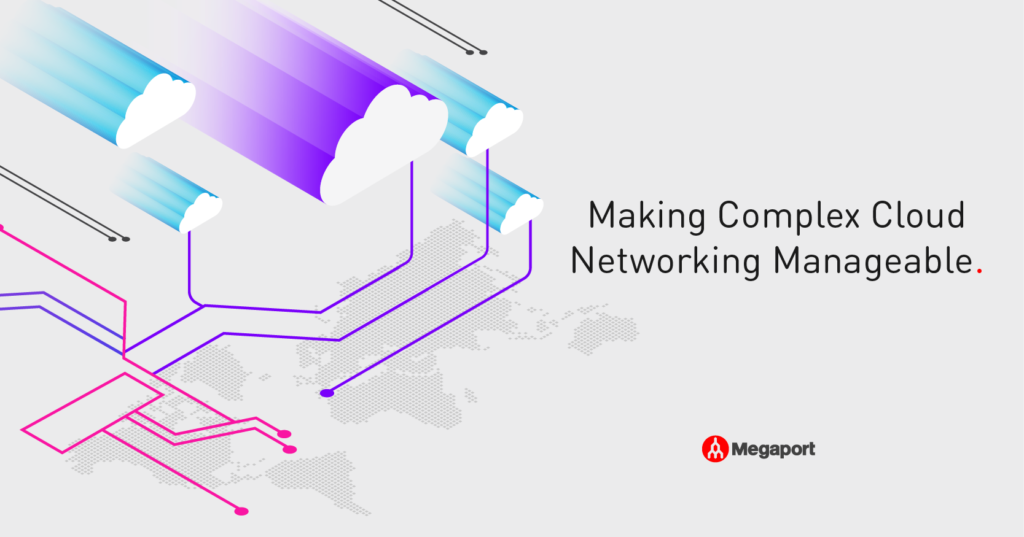
Making Complex Cloud Networking Manageable
- Cloud networking
- February 13, 2019
- RSS Feed
Navigate cloud complexity with Network as a Service (NaaS), a smarter approach to managing diverse cloud environments. NaaS simplifies connectivity by creating a single, software-defined access point for all cloud services—whether public, private, or hybrid. Streamline performance, enhance security, and ensure reliability with intuitive dashboards and SLA-backed support. Reclaim the simplicity of cloud IT and optimize hybrid cloud strategies with seamless, centralized management.
Between public and private offerings, market-leading solution packages compiled by the world’s biggest tech companies, and agile new services delivered by nimble startups, there’s a lot on offer in the cloud.
So, it’s no surprise that as businesses rush to embrace all that the cloud can deliver, it can become quite challenging to manage. Different lines of business have different demands, and before you know it, the IT team is managing a huge range of connections to unique services from diverse partners around the world.
But it isn’t the diversity of the solutions and services you’re accessing that make them difficult to manage. Ultimately, that’s decided by the ways you choose to connect to them. When you’ve got a handful of specialised, low-priority apps accessed via the public internet, cloud infrastructure delivered via a direct CSP connection, and another direct connection deployed to handle the delivery of your core SaaS apps, that’s how things get complicated.
Tackling complexity through smarter connectivity
The original cloud dream that got so many of us to venture into the world of cloud IT revolved around everything being easily manageable in one place, through simple web-based dashboards.
In a world where you get all your cloud services from a single vendor, this is still possible. But practically, as the cloud has become the primary way to obtain all kinds of IT services and capabilities, it’s become all but impossible for millions of businesses.
More vendors and partners mean more connections, and more siloed management platforms that aren’t integrated with one another. For IT teams, this leads to major headaches when it comes to things like optimising performance, maintaining security, and ensuring seamless interoperability between the systems their business depends on.
The goal is to return to that original cloud dream of a single, easy-to-manage connectivity point for the organisation’s entire cloud world—where everything can be managed together. Now, with the arrival of sophisticated Network as a Service offerings, that’s finally possible.
Utilising NaaS for software defined simplicity
Network as a Service (NaaS) enables businesses to create a single connectivity point for all of its cloud services—managed by a partner, and easily controllable within simple and intuitive dashboards.
NaaS blends the advantages of Software Defined Networking with the expertise of a dedicated partner that effectively handles all of your cloud connections in one place. Whatever you need to access, wherever it’s hosted, and however you need to access it, it’s all done through one core connection.
With all of your cloud traffic moving through a single point, it’s easier to control, track, optimise, and secure. Plus, it’s all maintained to the same high level of SLA offered by your NaaS partner, improving reliability and uptime for your business-critical applications and services.
Taking the headaches out of hybrid cloud management
As businesses plan and build out complex hybrid cloud strategies, the need for consistent connectivity between diverse cloud solutions is becoming greater than ever. For these companies, Network as a Service provides a streamlined way to connect directly to multiple cloud services, and easily manage them all—the same way they would a single direct CSP connection.
As a result, they can optimise bandwidth between services, more carefully control and monitor traffic, and ensure a high level of uptime with the help of their chosen connectivity partner. Plus, as those companies strive to connect their digital operations across multiple territories, the same single connectivity solution can help keep those locations connected to one another.
Easy-to-manage connectivity means easy-to-manage cloud environments. As more and more companies see the complexity of their cloud strategies explode, Network as a Service options will naturally emerge as one of the best ways to rationalise cloud operations and ensure that they deliver on the original simplicity and manageability promises of the cloud.


